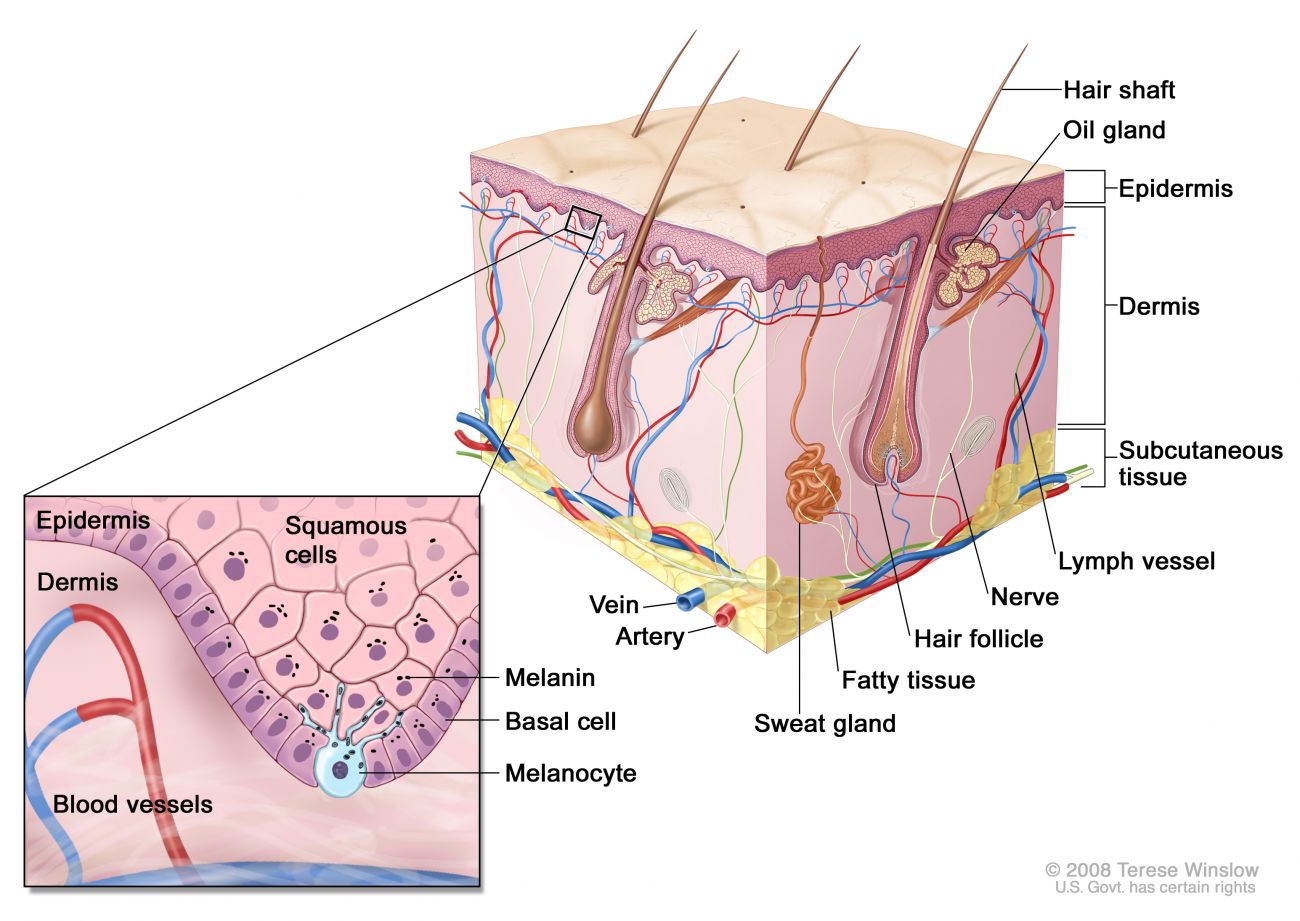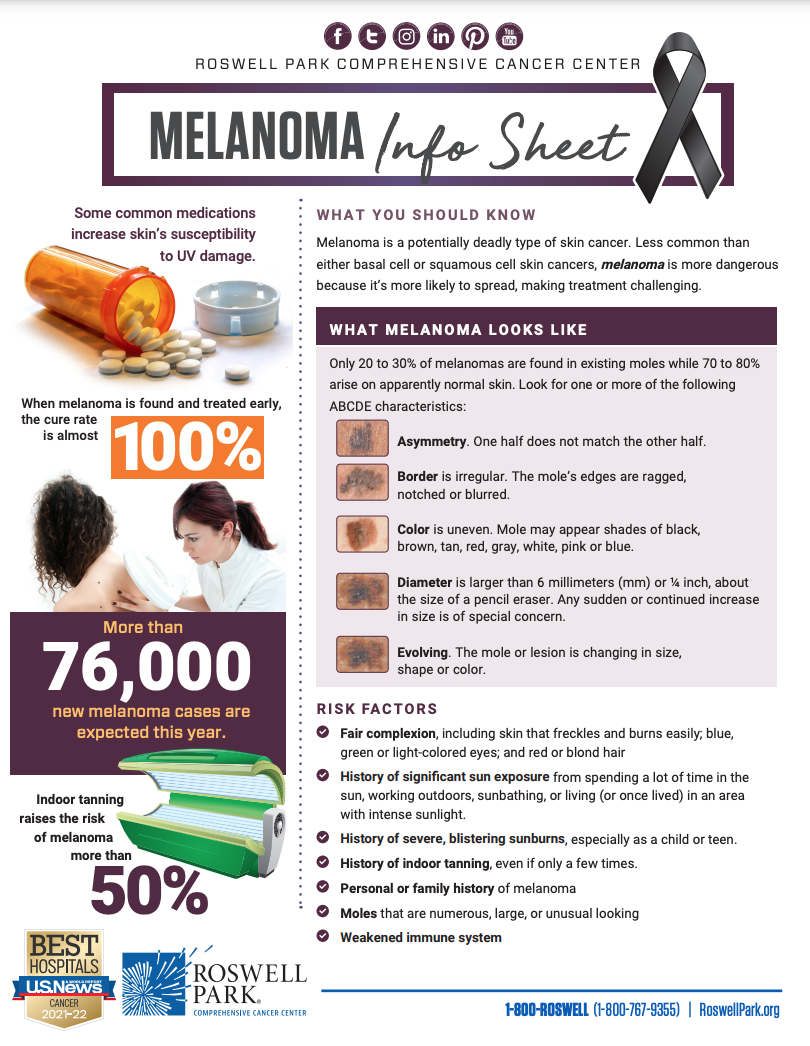Melanoma is a type of skin cancer that develops in certain skin cells called melanocytes. These are the cells that make the pigment (melanin) that colors your skin. When exposed to UV radiation, such as sunlight, the melanocytes make more pigment, causing the skin to darken or tan.
Your skin is your body’s largest organ, and it serves several important functions: protects your body from heat, injury and infection; stores water and fat; helps maintain body temperature; and makes vitamin D. The skin consists of two main layers:
- Epidermis – this outer, top skin layer contains mostly flat squamous cells. Under those and deeper in the skin are the basal cells, and scattered among the basal cells are the melanocytes, where melanoma begins.
- Dermis – this deeper, skin layer contains blood vessels, lymph vessels, nerves, sweat and oil glands, and hair follicles, which are held in places by a protein called collagen. The dermis layer also contains elastic tissue to help the skin maintain its shape.
Under the dermis lies the subcutis or hypodermis. This layer is not part of the skin, but connects the skin to muscles and bones. It consists of collagen and fat cells that conserve body heat and act as a shock absorber to protect organs from injury.
When a mole becomes melanoma
A mole is merely a cluster of melanocytes and surrounding skin tissue. They may be raised or flat, and may appear pink, brown, tan or similar to normal skin color. Common moles tend to be smaller than a pencil eraser. Melanoma can develop either from an existing mole or appear as a new mole, when the melanocytes become malignant. Melanoma can develop anywhere melanocytes are found, including the eye (ocular melanoma), digestive tract and lymph nodes, although these sites are less common.
Melanoma is less common than squamous cell and basal cell skin cancers, and accounts for only 5 percent of all skin cancers. But it is the most serious skin cancer type and causes the majority of skin cancer deaths. Melanoma is more likely to spread to lymph nodes and other parts of the body, and form new tumors. It occurs most commonly in the trunk, between the shoulders and hips, on the head, neck, and in women, on the lower legs. Although rare in black people or others with dark skin, when melanoma does develop in people with darker skin types, it tends to occur on the palms and soles.
The number of melanoma cases has increased for the past 30 years, especially among young adults. During these decades, melanoma rates have increased 64 percent among white men and 153 percent among white women. Melanoma is now the most common cancer among people age 25 to 29. Indoor tanning is an important risk factor.
Types of melanoma
Melanomas fall into one of four different types:
- Superficial spreading melanoma – The most common melanoma type, this type tends to grow slowly. It resembles a brown or black stain spreading from a mole.
- Nodular melanoma – This aggressive cancer grows into the dermis layer quickly and can metastasize. Ten percent of all melanoma cases are nodular melanoma.
- Lentigo maligna melanoma – This type, which appears on the face or arms of older adults, doesn’t develop from a mole. It looks more like a dark skin spot with an uneven border.
- Acral lentiginous melanoma – This rare type appears as a dark spot, line or bruise on the palms or soles. When dark-skinned people get melanoma, it’s often this type.

